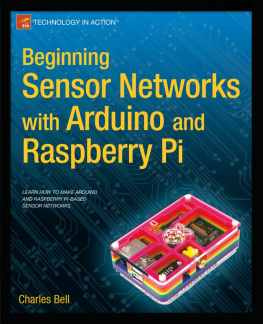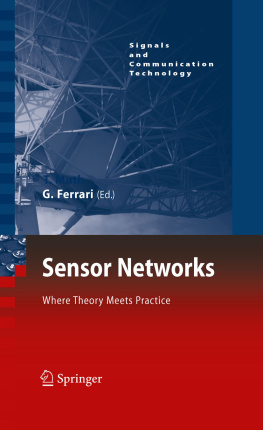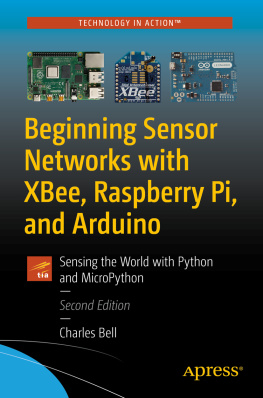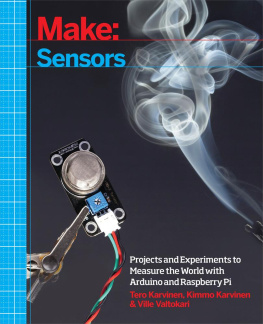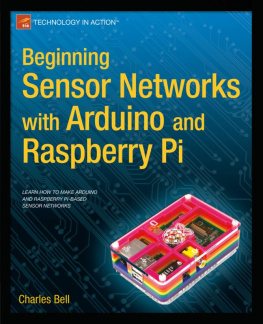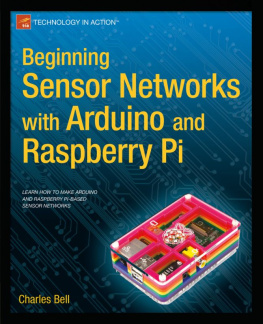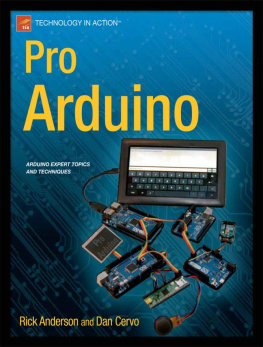Although some of these examples may not be as familiar to you as others, its a good idea as you read through these examples to try and imagine the components of the application. Visualize the sensors themselveswhere theyre placed and what data they may be reading and sending to another part of the network for processing and recording.
Automotive
Almost every modern automobile has a network of sophisticated sensors that monitor the performance of the engine and its subsystems. Some cars have additional sensors for monitoring external air temperature, tire pressure, and even proximity to objects and other vehicles.
If you take a late-model car in for service and get a chance to look in the garage area, you may notice several machines that resemble computer terminals on wheels (the newest ones are handheld units). These systems are diagnostic machines designed to connect to your car and read all the data the sensors and computer have stored. Some manufacturers use the industry standard interface called on-board diagnostics (OBD). There are several versions of this interface and its protocols; most dealerships have equipment that supports all the latest protocols.
Some manufacturers use their own proprietary diagnostic systems, but many use the same connector as OBD-II. For example, Porsche uses what it calls Porsche Integrated Workshop Information System (PIWIS). While PIWIS uses the same connector as OBD-II, Porsche implemented a proprietary system to read and alter the data.
Interestingly, while manufacturers that use proprietary diagnostic systems require you to service your car at an authorized dealer, some enterprising technologists have created compatible systems. In the case of Porsche, Durametric ( shows one of the screens of the Durametric software reading the sensor data from a Porsche Cayman.
Figure 1-1.
Porsche diagnostic data from Durametric
Notice the level of detail displayed. The image shows three metrics in the trace, but if you look at the top of the screen you will see many more metrics that can be monitored. The data shown in the graph was gathered in real time and displayed using the sophisticated sensor networks Porsche employs.
The use of sensors in automobiles has begun to spill over into related machinery such as motorcycles, boats, and even the venerable farm tractor. Many modern farm machines such as combines have sophisticated sensors that enable autopilot mode.
Environment
The environment is on many peoples minds, and many scientists are actively monitoring it. Motives for monitoring the environment range from checking a specific area or room for gases and tracking the areas temperature and humidity; to monitoring and reporting anomalies for sensitive equipment, such as running chemical analyses for clean rooms. Examples of environment sensor networks include those used to monitor air pollution, detect and track forest fires, detect landslides, provide earthquake early warnings, and provide industrial and structural monitoring.
Sensor networks are ideal for all forms of environmental monitoring. Due to the sensors small size, low energy requirements, and low cost, implementers can install them at sites or at specific stations or machines for precise reporting. For example, a clean-room environment often requires very precise temperature and humidity control as well as extremely low levels of contaminants (loose particles floating in the air). Sensors can be used to measure these observations at key locations (windows, doors, air vents, and so on); the data is sent to a computer that records it and generates threshold alerts. Most sophisticated clean rooms tie the filtration, heat, and cooling systems into the same computer system (through the use of their own sensors) to control the environment based on the data collected from the sensor network.
Environmental sensors arent limited to temperature, humidity, dew point, and air quality. Sensors for monitoring electromagnetic interference and radio frequencies may be used in hospitals to protect patients who rely on sensitive electronic medical equipment. Sensors for monitoring water purity, oxygen level, and contaminants may be used in fish farms to maximize crop yield.
Scientists and industrial engineers arent the only ones who build environmental sensor networks. You can build your own using relatively low-cost sensors. In their book Environmental Monitoring with Arduino: Building Simple Devices to Collect Data About the World Around Us (Make, 2012), Emily Gertz and Patrick Di Justo show how to build simple sensor networks to monitor noise, water purity, and, of course, weather.
If this sounds too good to be true, consider for the moment your average home heating, ventilation, and cooling system (HVAC). It has a very simple sensor network, often in the form of a single sensor for ambient temperature (the thermostat on the wall) that feeds data to a control board that turns on the mechanisms to pump gases through the system and the fan to move air. Some modern HVACs use additional sensors to monitor air quality and engage additional active electronic filters or to divert heat and cooling to areas where its needed most.

